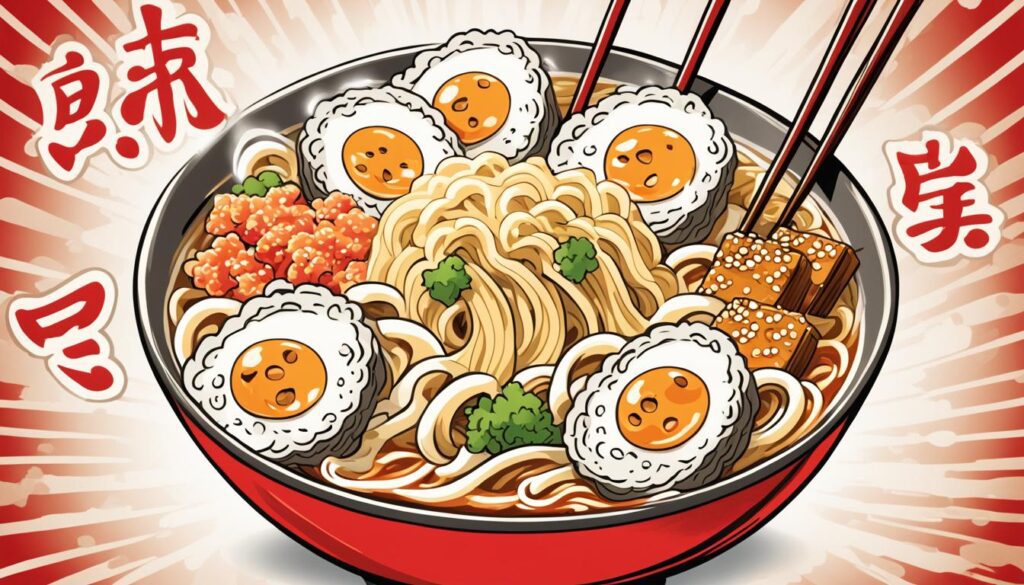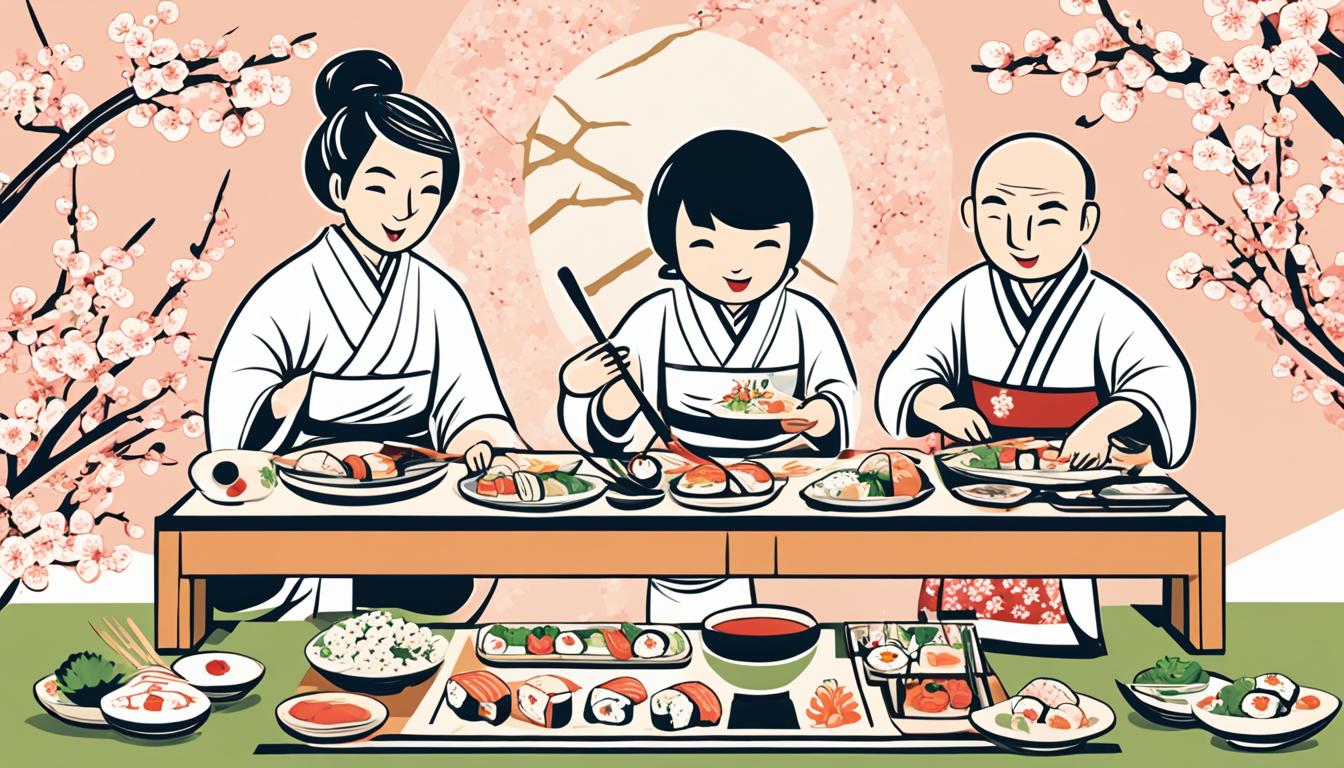In Japanese culture, there are specific phrases and expressions used to convey gratitude, satisfaction, and enjoyment during a meal. One commonly used phrase that is often associated with “bon appetit” is “itadakimasu.” However, it is important to note that “itadakimasu” does not exactly mean “enjoy your food,” but rather it signifies “I receive” or “I ingest” the food. It is a humble expression of gratitude towards the chef, the person who prepared the meal, and all those involved in bringing the food to the table. It is typically said to oneself, even when eating alone, and is accompanied by a slight bow of the head.
Another phrase often used to indicate that the meal is served and ready to eat is “meshiagare.” This can be thought of as the Japanese equivalent of “bon appetit.” It is said by the chef, server, or host to indicate that the food is ready, and the appropriate response is “itadakimasu.” Expressing appreciation for the food’s taste can be done with phrases like “Oishii!” (meaning “It’s good!”) or “Umai!” (meaning “It’s delicious!”) after taking the first bite.
Understanding the Etiquette Behind Itadakimasu and Gochisousama Deshita
When it comes to Japanese dining etiquette, expressing gratitude and respect for the meal and those involved in its preparation is crucial. “Itadakimasu” is a phrase used before starting a meal to show appreciation for the food, the cook, and all the people and efforts that went into bringing the meal to the table. It is a way of acknowledging the sacrifice of plants and animals for our sustenance.
On the other hand, “gochisousama deshita” is a phrase used at the end of a meal to express gratitude, essentially meaning “It was a feast.” This phrase acknowledges the chef’s efforts and shows respect towards them. It is also customary to return all dishes and chopsticks to their original positions before saying “gochisousama deshita.”
Meshiagare: The Japanese Equivalent of “Bon Appetit”
In Japan, the phrase “meshiagare” is used to indicate that the food has been served and is ready to eat. It is the Japanese equivalent of “bon appetit” and is typically said by the chef, server, or host. When “meshiagare” is spoken, it is customary to respond with “itadakimasu” before starting to eat. This exchange of phrases symbolizes gratitude for the food and signifies that one is ready to enjoy the meal.
Oishii: Expressing Deliciousness in Japanese
To express that the food is delicious in Japanese, one can use the word “oishii.” This term is equivalent to saying “it’s delicious” in English. Another phrase that can be used to express enjoyment of the meal is “umai.” This term is often used by men and can also be said after taking the first bite to express the deliciousness of the food.
Okawari Kudasai: Asking for More Food in Japanese
In Japanese dining culture, it is common to finish all the food on your plate, showing appreciation for the meal. However, if one portion of food is not enough, it is acceptable to ask for more by using the phrase “okawari kudasai.” This phrase translates to “more food, please” and is a polite way to request a second serving. Adding “kudasai” at the end makes the request more polite, as “kudasai” means “please.”
Other Phrases and Expressions in Japanese Dining
Aside from the main phrases mentioned, there are other terms and expressions used in Japanese dining. For example, the term “harapeko” can be used to express that one is hungry or has a strong appetite. It is made up of the words “hara” (meaning stomach) and “peko” (meaning appetite). Another phrase, “omakase,” refers to a meal where the chef selects and recommends the dishes. It can be translated as “I’ll leave it up to you.” This phrase is often associated with high-quality and specialized menus, but it is typically expensive and meant for special occasions.
Understanding the Etiquette Behind Itadakimasu and Gochisousama Deshita
When it comes to Japanese dining etiquette, expressing gratitude and respect for the meal and those involved in its preparation is crucial. The phrase “Itadakimasu” is used before starting a meal to show appreciation for the food, the cook, and all the people and efforts that went into bringing the meal to the table. It is a way of acknowledging the sacrifice of plants and animals for our sustenance. Saying “Itadakimasu” is accompanied by a slight bow of the head and is typically said to oneself, even when eating alone.
On the other hand, “Gochisousama Deshita” is a phrase used at the end of a meal to express gratitude and signifies “It was a feast.” This phrase acknowledges the chef’s efforts and shows respect towards them. It is customary to return all dishes and chopsticks to their original positions before saying “Gochisousama Deshita.”
Understanding and practicing these phrases not only demonstrates politeness but also reflects the deep appreciation for the food and the people who made it. Now that you understand the etiquette behind “Itadakimasu” and “Gochisousama Deshita,” you can fully embrace the Japanese dining experience and show respect to those who prepared your meal.
Meshiagare: The Japanese Equivalent of “Bon Appetit”
In Japan, the phrase “meshiagare” is used to indicate that the food has been served and is ready to eat. It is the Japanese equivalent of “bon appetit” and is typically said by the chef, server, or host. When “meshiagare” is spoken, it is customary to respond with “itadakimasu” before starting to eat. This exchange of phrases symbolizes gratitude for the food and signifies that you are ready to enjoy the meal.
Oishii: Expressing Deliciousness in Japanese

To convey the deliciousness of food in Japanese, there are a couple of phrases you can use. The word “oishii” is the perfect way to express that something is delicious. It is equivalent to saying “it’s delicious” in English. This simple term is commonly used to describe the taste and flavor of a dish.
In addition to “oishii,” another phrase that can be used to express enjoyment of a meal is “umai.” This term is often used by men and can also be said after taking the first bite of a delicious dish. “Umai” is an informal way to convey the deliciousness of food and is commonly used in casual conversations.
| Phrase | Pronunciation | Meaning |
|---|---|---|
| Oishii | oh-ee-shee | Delicious |
| Umai | oo-mai | Delicious |
Okawari Kudasai: Asking for More Food in Japanese
In Japanese dining culture, it is common to finish all the food on your plate, showing appreciation for the meal. However, if one portion of food is not enough, it is acceptable to ask for more by using the phrase “okawari kudasai.” This phrase translates to “more food, please” and is a polite way to request a second serving. Adding “kudasai” at the end makes the request more polite, as “kudasai” means “please.”
Common Phrases in Japanese Dining
| Phrase | Translation |
|---|---|
| Itadakimasu | I receive/I ingest the food (said before starting a meal) |
| Gochisousama deshita | It was a feast (said after finishing a meal) |
| Meshiagare | Enjoy your meal/Bon appetit (said when the food is served and ready to eat) |
| Okawari kudasai | More food, please (polite request for a second serving) |
| Oishii | It’s delicious |
| Umai | It’s tasty/delicious (used mostly by men) |
Asking for more food in Japanese can be done politely with the phrase “okawari kudasai.” It is important to remember the cultural norms and show appreciation for the meal. Enjoy your dining experience and say “bon appetit” in the Japanese language!
Other Phrases and Expressions in Japanese Dining
Apart from the commonly used phrases for expressing gratitude and enjoyment during a Japanese meal, there are several other terms and expressions that add to the unique dining experience.
For instance, the term “harapeko” combines the words “hara,” meaning stomach, and “peko,” meaning appetite. It can be used to convey hunger or a strong appetite, indicating that you are ready to savor the meal.
Another interesting phrase is “omakase,” which refers to a meal where the chef personally selects and recommends the dishes. It can be translated as “I’ll leave it up to you.” This phrase is often associated with high-quality and specialized menus. However, it is important to note that such meals are typically expensive and reserved for special occasions.
Exploring these diverse phrases and expressions adds depth to Japanese dining, allowing you to fully appreciate the rich culinary traditions and etiquettes that accompany the meal.

